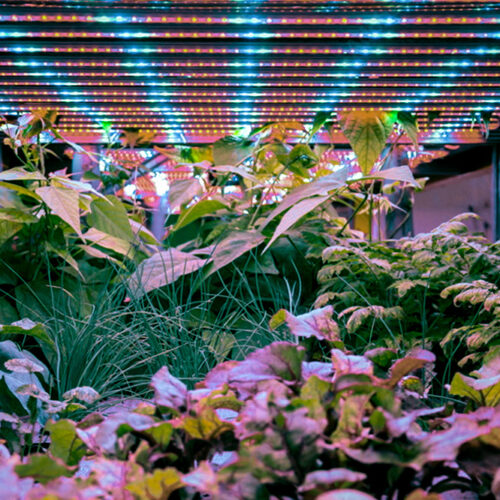
Introduction The fungus gnat, is the common name for flies from several families, especially
Sciaridae and Diadocidiidae. It’s the most common pest in Living Soils, particularly in cultivation
methods that use Super Soil techniques. This technique, which features a rich composition of
undecomposed organic matter, provides an ideal environment for the development of the
fungus gnat. The presence of these pests can be particularly problematic due to their ability to
reproduce rapidly and cause significant damage to plant roots, affecting their growth and
health.
Combating the fungus gnat is essential to protect crops in Living Soils from their harmful effects. This article delves into integrated strategies for their control, highlighting the use of natural enemies as a safe and effective solution.
Identification of the Fungus Gnat These small
These small pests, no more than 5 mm and ranging in color from black to dark brown, can reproduce rapidly and withstand varied climatic conditions, underscoring the need for effective control.
Impact and Damage
Fungus gnat larvae attack young roots and stems, weakening plants. Recognizing and
acting against this pest is vital for the well-being of crops.
Strategies for Control and Prevention
Physical Barriers
The implementation of protective meshes, the use of inert mulches, and the application of color
traps are essential preventive measures against the incursion of the fungus gnat in cultivated
areas.
Protective Meshes: Establishing physical barriers around crops can effectively prevent
the access of the fungus gnat.
Inert Mulches: Covering the substrate with inert materials, like sand or vermiculite, acts as an
effective physical barrier. This prevents adult flies from laying their eggs in the soil, reducing the
emergence of larvae near the plants.
Color Traps: The use of traps of specific colors, especially yellow traps, is effective in attracting
and capturing adult flies. These traps not only help to reduce the adult fly population but are
also valuable tools for monitoring pest activity and evaluating the effectiveness of the control
measures implemented. Placing these traps around cultivated areas allows for early detection
of the presence of the fungus gnat, facilitating timely interventions.
Biological Control
Entomopathogenic Nematodes
Nematodes, especially the genera Steinernema and Heterorhabditis, offer effective biological control, attacking the larvae directly in the soil.
Bacillus thuringiensis israelensis (Bti)
Bti is a bacterium that produces toxins lethal to the larvae of the fungus gnat without affecting beneficial insects. Its application in irrigation water or directly on the affected soil complements other biological control strategies, offering an environmentally safe and specific solution against this pest.
Other Natural Enemies
Predatory mites, soil beetles, and parasitoid wasps play crucial roles in reducing fungus gnat populations, highlighting the importance of promoting biodiversity.
Effective Implementation
An integrated strategy that combines physical barriers, the use of natural enemies, and Bti is the best option for effective management of the fungus gnat. The appropriate selection and correct application of these techniques ensure the protection of crops.
Conclusion
The fungus gnat can be effectively controlled with an integrated pest management approach. However, it’s not necessary to use all the means at our disposal.
Based on our experience, with the use of yellow chromatic traps and entomopathogenic
nematodes once per cycle, it’s sufficient to control the pest. Yellow Traps are placed at the
beginning of the cultivation, placed randomly, and if possible near the substrate. When we
observe that the population increases considerably, it’s time to apply the entomopathogenic
nematodes. It’s important to follow the instructions of the nematode provider and keep the
substrate continuously moist for 10-15 days to ensure that the nematodes can do their work.
Share your experience
Integrating biological control methods like natural enemies into your pest management strategy can make a difference in the fight against the fungus gnat. Share your experiences and discover how these solutions can improve the health of your crops.






